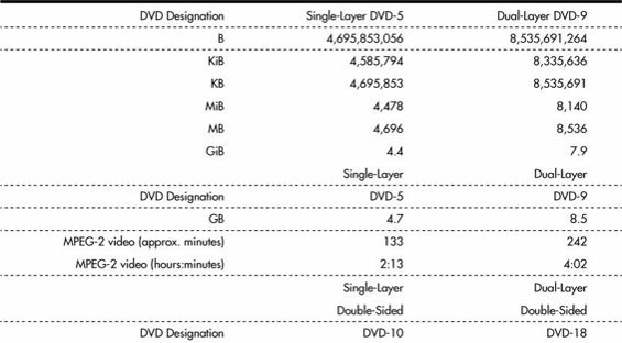Hardware Reference
In-Depth Information
As you might notice, the capacity of dual-layer discs is slightly less than twice of single-layer discs,
even though the layers take up the same space on the discs. (The spiral tracks are the same length.)
This was done intentionally to improve the readability of both layers in a dual-layer configuration. To
accomplish this, the bit cell spacing was slightly increased, which increases the length of each pit and
land. When reading a dual-layer disc, the drive spins slightly faster to compensate, resulting in the
same data rate. However, because the distance on the track is covered more quickly, less overall data
can be stored.
Besides the standard four capacities listed here, a double-sided disc with one layer on one side and
two layers on the other can be produced. This would be called a DVD-14 and have a capacity of
13.2GB, or about 6 hours and 15 minutes of MPEG-2 video. Additionally, 80mm discs, which store
less data in each configuration than the standard 120mm discs, can be produced.
Because of the manufacturing difficulties and the extra expense of double-sided discs—and the fact
that they must be ejected and flipped to play both sides—most DVDs are configured as either a DVD-
5 (single-sided, single-layer) or a DVD-9 (single-sided, dual-layer), which allows up to 8.5GB of
data or 242 minutes of uninterrupted MPEG-2 video to be played. The 133-minute capacity of DVD-5
video discs accommodates 95% or more of the movies ever made.
Note
When you view a dual-layer DVD movie, you will see a momentary pause onscreen when the



